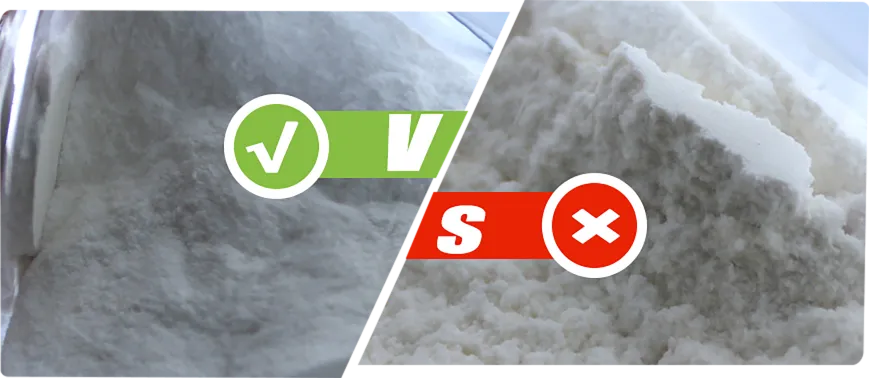
Nov . 12, 2024 09:30 Back to list
hydroxyethyl cellulose synthesis
Synthesis of Hydroxyethyl Cellulose A Comprehensive Overview
Hydroxyethyl cellulose (HEC) is a non-ionic water-soluble polymer derived from cellulose, which is a natural carbohydrate polymer obtained from the cell walls of plants. Due to its unique properties, such as thickening, gelling, and film-forming abilities, HEC has been widely used in various industries including pharmaceuticals, cosmetics, and construction. This article will delve into the synthesis of hydroxyethyl cellulose, exploring the methods, reactions involved, and the factors influencing its production.
Synthesis Methods
HEC synthesis primarily involves the etherification of cellulose. Cellulose, composed of repeated glucose units, initially undergoes swelling in an alkaline medium to increase its reactivity. This process is often facilitated using sodium hydroxide or potassium hydroxide, which hydrates the cellulose and makes it more amenable to chemical modifications.
1. Alkali Activation The cellulose is treated with an alkaline solution, which leads to the formation of alkali cellulose. This step is crucial as it creates functional sites on the cellulose chain that can react with the subsequent reagents in the synthesis process.
2. Etherification Reaction The activated cellulose is then reacted with ethylene oxide (EO). Ethylene oxide acts as the etherifying agent that introduces hydroxyethyl groups into the cellulose polymer chain. The reaction typically occurs under controlled temperatures, usually in a range between 50 to 80 degrees Celsius. The amount of ethylene oxide and the reaction time are critical parameters, as they directly influence the degree of substitution (DS) of the hydroxyethyl groups on the cellulose backbone.
The extent of etherification is measured by the degree of substitution, which indicates how many of the hydroxyl groups of cellulose have been replaced by hydroxyethyl groups. A higher DS value generally correlates with improved water solubility and varied rheological properties.
3. Neutralization and Purification After the etherification process, the resulting hydroxyethyl cellulose is neutralized to stop the reaction, often using dilute acid solutions. The product is then purified, typically through precipitation in a non-solvent like alcohol or isopropanol, to remove any unreacted ethylene oxide or byproducts.
4. Drying and Milling The final step involves drying the precipitated HEC, which is then milled to achieve the desired particle size suitable for various applications.
Factors Influencing Synthesis
Several factors can influence the synthesis of HEC, and understanding these can help in optimizing its production
hydroxyethyl cellulose synthesis

- Concentration of Reactants The concentration of both the alkaline solution and ethylene oxide will affect the rate of reaction and the degree of substitution in the final product. Higher concentrations typically yield a higher DS, but excessive amounts may lead to side reactions.
- Temperature and Time The temperature during the etherification reaction is crucial; higher temperatures can accelerate the reaction but may also lead to degradation of cellulose. Similarly, longer reaction times can enhance substitution but must be controlled to prevent any degradation of the molecular structure.
- Cellulose Source The type and purity of cellulose used as the starting material can significantly affect the properties of the synthesized HEC. Different cellulose sources may have varying degrees of crystallinity and molecular weight, which in turn influence the physical properties of HEC.
Applications of Hydroxyethyl Cellulose
Thanks to its versatile properties, hydroxyethyl cellulose finds applications across numerous fields
- Pharmaceuticals HEC is commonly used as a thickening agent in ointments and creams, as well as in drug delivery systems where it acts as a stabilizer and suspending agent.
- Cosmetics In cosmetic formulations, HEC serves as a binder and thickener, enhancing the texture and stability of products such as lotions and shampoos.
- Construction HEC is also used in construction materials, such as tile adhesives and drywall formulations, where it improves workability and water retention.
Conclusion
The synthesis of hydroxyethyl cellulose represents a fascinating intersection of natural and synthetic chemistry. Through controlled etherification of cellulose, it is possible to produce a versatile polymer that meets the demands of various industrial applications. Understanding the synthesis process and the factors that influence it can lead to a more effective production of HEC, ultimately enhancing its application potential in modern industry. As research continues into cellulose derivatives, the future of HEC remains promising, offering solutions that marry functionality with sustainability.
-
Versatile Hpmc Uses in Different Industries
NewsJun.19,2025
-
Redispersible Powder's Role in Enhancing Durability of Construction Products
NewsJun.19,2025
-
Hydroxyethyl Cellulose Applications Driving Green Industrial Processes
NewsJun.19,2025
-
Exploring Different Redispersible Polymer Powder
NewsJun.19,2025
-
Choosing the Right Mortar Bonding Agent
NewsJun.19,2025
-
Applications and Significance of China Hpmc in Modern Industries
NewsJun.19,2025







